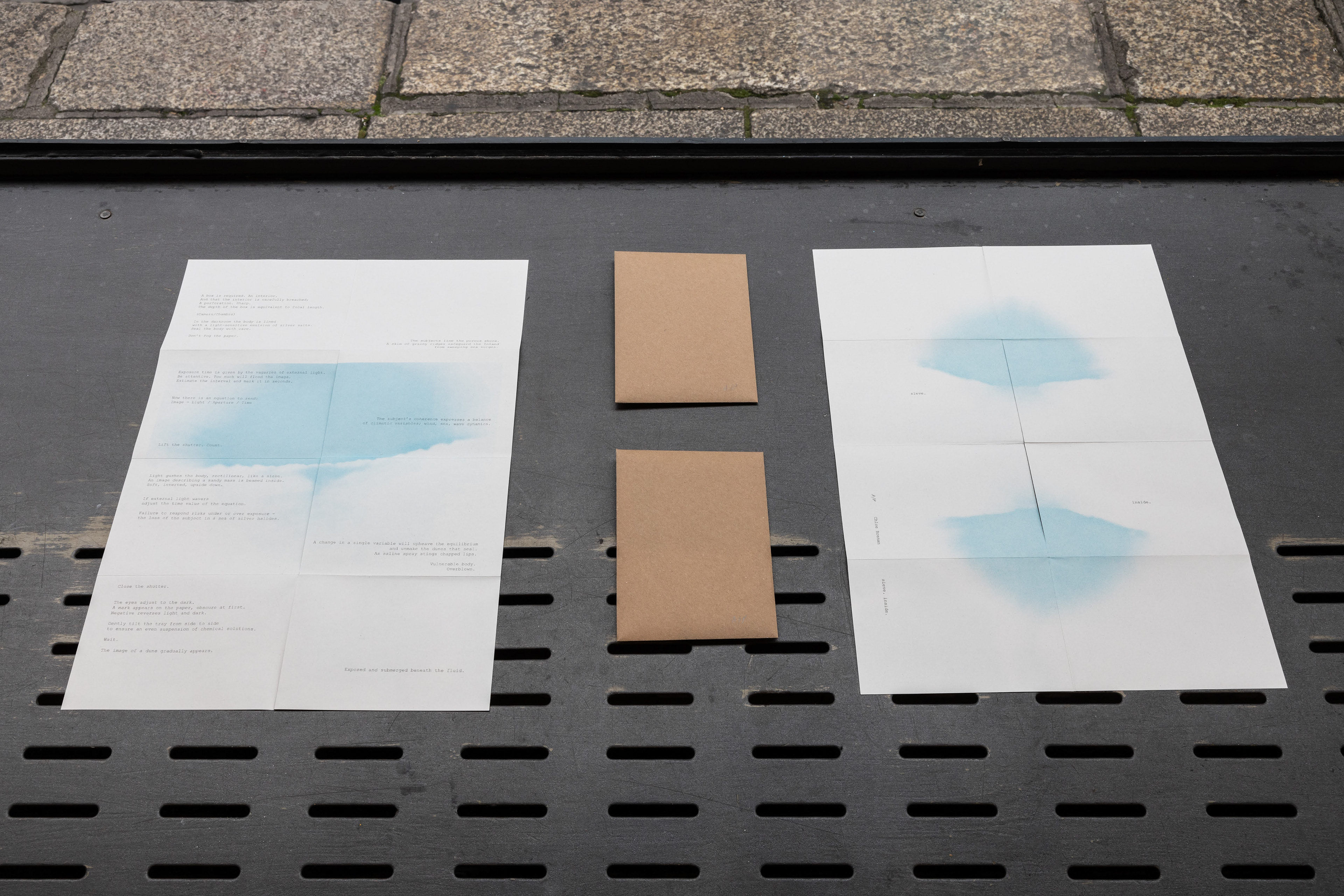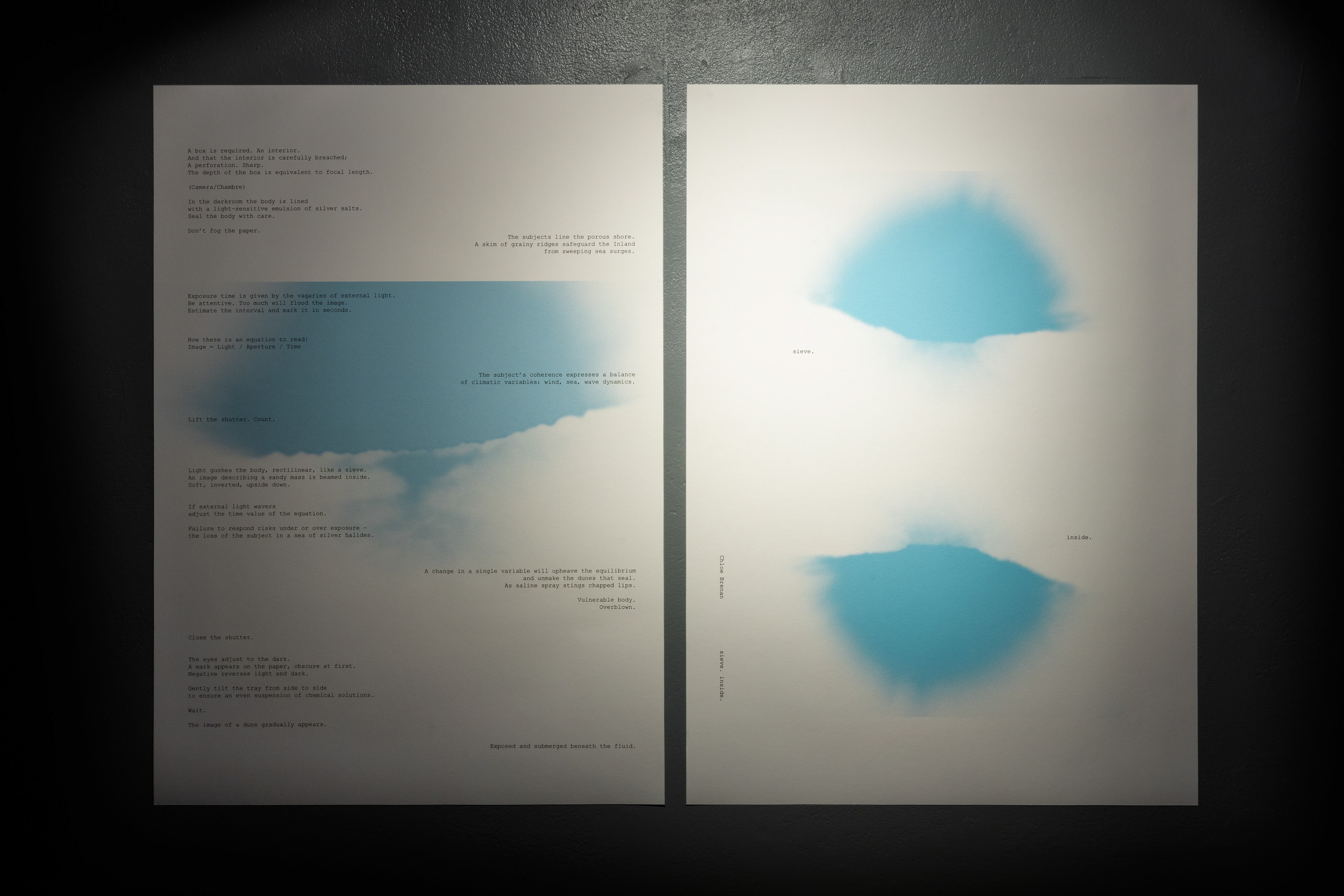Risograph poster zine.
Capturing the subject in isolation is a futile endeavour because the body is always vulnerable. This work explores the relationship between the coastal dune and the pinhole photograph as highly contingent and precarious objects. The body acts as a sort of interlocutor, teasing out this relationship through a non-functional set of instructions and observations. The formation of a pinhole photograph depends on a particular balance between ambient light, aperture and time while the formation of a sand dune depends on a complex environmental balance between wind, sea and temperature dynamics. To change one part of the equilibrium would collapse the requisite balance resulting in the under or over exposure of the pinhole photograph and the erosion of the dune. The task is to maintain a balance between the inner workings of the camera body and the flux of the external environment - no automated light sensors or mechanical timers available to mitigate against inevitable human error. The attentive body must gauge the intensity of ambient light, assign it an appropriate exposure time and be constantly ready to adjust this duration in response to erratic shifts in cloud cover to which the Irish sky is subject. The body must remain as still as possible throughout exposure time in order to photographically fix the subject/scene but the body itself is not neutral. The body is within the scene and subject to the scene. It is vulnerable; shifting sandy ground beneath feet will obstruct stasis while cold winds will induce a shiver that vibrates through the camera body, blurring the subject. No vacuum, no fixed boundaries. The body is prone - haptic error bleeds into the subject and the dune’s edges tremble.


